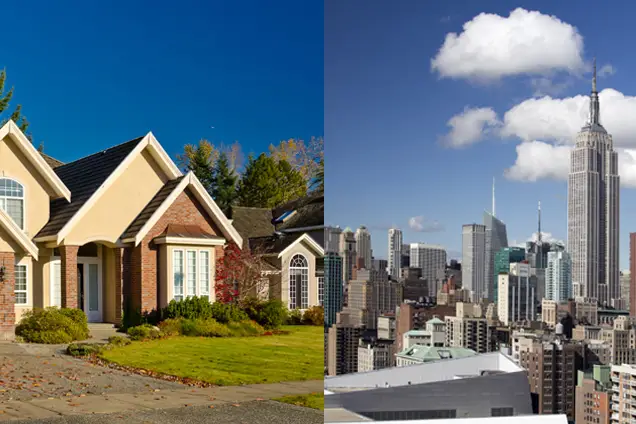The GOP did a post-mortem after the 2012 election to examine why Mitt Romney was unable to defeat President Obama amid conditions which should have been favorable to a Republican challenger. You can read details on the full report from ABC News, and a critical analysis of the findings from National Review, but here are the main takeaways according to the Republican National Committee:
1. Pass some kind of immigration reform
2. Pay attention to minority voters
3. Soften stance on matters surrounding gay rights
4. Discuss ideas outside the conservative echo chamber
5. Take cues from the state level in GOP success
6. Shed the image of the “party of the wealthy”
The last issue is the most ironic, suggesting that multi-millionaire Romney lost, partly, because he was rich—so this year, the GOP may nominate multi-billionaire Trump!
But as commenter “Toto” noted in our page, here, Monday, the GOP has another problem.
That is, the Urban/Rural divide. Toto pointed to a fact that urban areas tend to vote Democratic, while rural areas tend to vote Republican. It’s not one of the “autopsy” six topics, and I don’t think it can be explained just by the fact that minorities (point #2) are more likely to live in urban areas.
John Edwards kept telling us there were “Two Americas,” and that seems to be the case. The Washington Post described that divide as urban vs. rural:
A look at national trends shows how population density and voting patterns are linked.
Using data from the Census Bureau, we divvied up each county in the United States into one of six categories:
1) Counties that are 90 percent urbanized areas or more, which we gave the label SU
2) Counties that are 50 to 90 percent urbanized areas (U)
3) Counties that are more than half urban clusters (small cities) (S)
4) Counties where there is no majority of urban, rural, or urban clusters (M)
5) Counties that are 50 to 90 percent rural areas (R)
6) Counties that are 90 percent rural areas or more (SR). . .There’s a clear pattern in how those different areas vote. Comparing each county’s vote to the national average in each election, we were able to see how the different types of county have changed since 1988. Between the 1988 and 2012 elections, heavily urban counties, the SUs, were 32 percentage points more Democratic in their voting than the average. The heavily rural counties were about 11 percentage points more Republican — shifting right an average of two percentage points each election.
FiveThirtyEight suggests that this population change can help Democrats on the national level, but hurts them in states:
For the first time in the post-World War II era, cities are growing at about the same rate as their suburbs, which for decades grew at a much faster clip. That’s good news for Democrats (especially Hillary Clinton) nationally: Their party’s recent Electoral College victories have been fueled by huge vote margins in urban cores.
But presidential success may come at the expense of Democratic candidates at the congressional and state legislative levels: The increased clustering of Democratic votes in central cities has diminished the party’s fortunes in the large swath of suburban and rural seats that are crucial to building legislative majorities.
The site notes that while population growth has decreased in rural and suburban areas (where Republicans rule), since 2000, there has been an uptick in population growth in the cities.
So far, the 2010s have flipped the script: The recession caused 20-somethings to delay moves to the suburbs, and the appeal of the urban lifestyle has flourished — trends well-documented by leading demographers like William Frey of the Brookings Institution. While suburban and rural growth has slowed considerably, growth in urban counties is slightly up and is now roughly equal to growth in suburban counties.
All very interesting, but these reports don’t answer the most important question—WHY? A Pew Research study points out that lifestyle matters:
It is an enduring stereotype – conservatives prefer suburban McMansions while liberals like urban enclaves – but one that is grounded in reality. Given the choice, three-quarters (75%) of consistent conservatives say they would opt to live in a community where “the houses are larger and farther apart, but schools, stores and restaurants are several miles away,” and just 22% say they’d choose to live where “the houses are smaller and closer to each other, but schools, stores and restaurants are within walking distance.” The preferences of consistent liberals are almost the exact inverse, with 77% preferring the smaller house closer to amenities, and just 21% opting for more square footage farther away.
But is it really as simple as that? House size and walkability? Or is there more to it than that? YOU tell us: WHY are cityfolk more likely to vote Democratic, while suburban and countryfolk vote Republican??
Donate Now to Support Election Central
- Help defend independent journalism
- Directly support this website and our efforts
